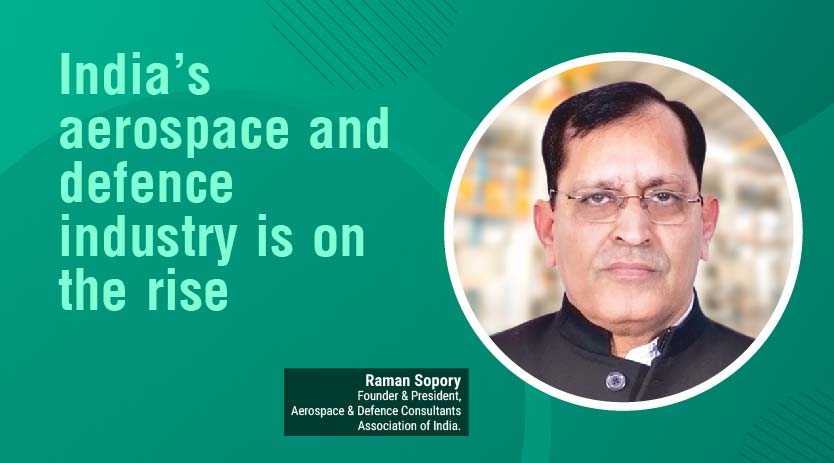IMTEX 2024 to unveil pivotal trends in manufacturing
By OEM Update Editorial December 29, 2023 6:34 pm IST
The upcoming IMTEX Forming 2024 will unveil pivotal trends in manufacturing. The event showcases innovations reshaping the industry from near-net shape processes to laser technology. Integrating digital tech and robotics revolutionises metal forming, enhancing efficiency and safety.
What is the outlook for the manufacturing industry in 2024?
India’s manufacturing sector looks set to maintain its strong performance in 2024, supported by various initiatives by the Government to boost emerging industries. Sectors such as automotive, aerospace, defence, railways, and electronics are anticipated to see continued advancements. Additionally, schemes like the Emergency Credit Line Guarantee Scheme (ECLGS), Raising and Accelerating MSME Performance (RAMP), MSME Self-Reliant India Fund, and Udyam Assist Platform (UAP), among others, have encouraged small industries to expand their capacities and become part of the formal sector. This allows them to access Priority Sector Lending (PSL) benefits.
Furthermore, the steps taken by the government to reduce reliance on imports, incentivize domestic manufacturing through PLI schemes and scale up exports are helping to improve manufacturing in India. The seasonally adjusted S&P Global India Manufacturing Purchasing Managers’ Index rose to 56 in November from 55.5 in October. This growth was attributed to reduced price pressures and improved firms’ ability to secure domestic and international business. The sustained growth momentum is expected to persist throughout 2024.
What are the prominent industry trends and machine innovations to be showcased at IMTEX 2024, and what is the anticipated visitor turnout for the event?
According to industry trends, near-net shape manufacturing is gaining prominence, with metal forming industries playing a key role in this segment. The widespread growth of electric vehicles amplifies the emphasis on Forming and Welding technologies. Moreover, the Government’s investment in railways and new coach construction is boosting the sheet metal industries. Notably, IMTEX 2024 reflects trends where laser-cutting machines are increasingly utilised across various sectors.
Participation from Laser-based solutions has surged by 52 per cent compared to previous editions, with segments like Tooltech witnessing a 22 per cent growth, Digital manufacturing up by 50 per cent, and additional co-located shows focusing on moulding and fastening solutions. Some examples of machines displayed during the exhibition include fibre laser machines, precision levellers, pick and place units, servo presses, machine production monitoring systems, and 3D printing solutions. Technology highlights will include die-forging hammer technology, waterjet cutting technology, and compact drive technology. Exhibitors will showcase reverse engineering solutions, friction welders, CNC press brakes and shears, metal scrap recycling, thermal cutting solutions, etc. Furthermore, we expect a footfall of around 40,000 visitors for the exhibition.
What is your perspective about merging digital technologies and robotics to enhance efficiency within metal forming procedures?Digital technologies have taken centre stage in today’s manufacturing space. The quest to enhance productivity, cut production costs, and facilitate faster customisation. The integration of cutting-edge digital advancements has enabled the gradual infusion of robotic solutions in production lines, particularly in remote or hazardous settings, automating intricate tasks. The sheet metal industry, for instance, has been using digital technologies and robotics as part of its manufacturing process to enable operators’ safety and quicker processes in manufacturing.
IMTEX, acknowledging this shift, has introduced a dedicated pavilion for digital technologies encompassing additive manufacturing, Industry 4.0, and robotics within its Digital Manufacturing concurrent show, aimed at supporting the growth of the machine tool industry. The continual advancement in digital technologies has notably enhanced task precision, improved quality control, reduced manufacturing downtime, and enhanced efficiency to meet evolving customer demands. Robotics, specifically, is employed in material handling systems for input retrieval and manipulating manufactured products. The potential demonstrated by these innovative technologies to revolutionise manufacturing processes is considerable.
What impact do you envision ‘Make in India and AatmaNirbhar Bharat’ having on driving growth within India’s manufacturing sector?
Initiatives like Make in India and AatmaNirbhar Bharat have been instrumental in promoting manufacturing growth. This improved manufacturing prowess will positively affect India’s economy, which is now predominantly dependent on the services sector. The effect of such growth in manufacturing will be reflected in macroeconomic indicators such as growth in GDP numbers, reduction in fiscal deficit, greater participation in the global value chain, and robust inflow of FDI.
Make in India and AatmaNirbhar Bharat initiatives have strengthened industries, particularly SMEs and startups, instilling greater business confidence, thus enabling the manufacture of technologically advanced and innovative products. This would eventually support improving domestic demand, boosting exports, encouraging employment generation, and building a robust supply chain. All these are happening responsibly, keeping in view the lesser impact on environmental, social, and governance (ESG) norms.
Cookie Consent
We use cookies to personalize your experience. By continuing to visit this website you agree to our Terms & Conditions, Privacy Policy and Cookie Policy.


















